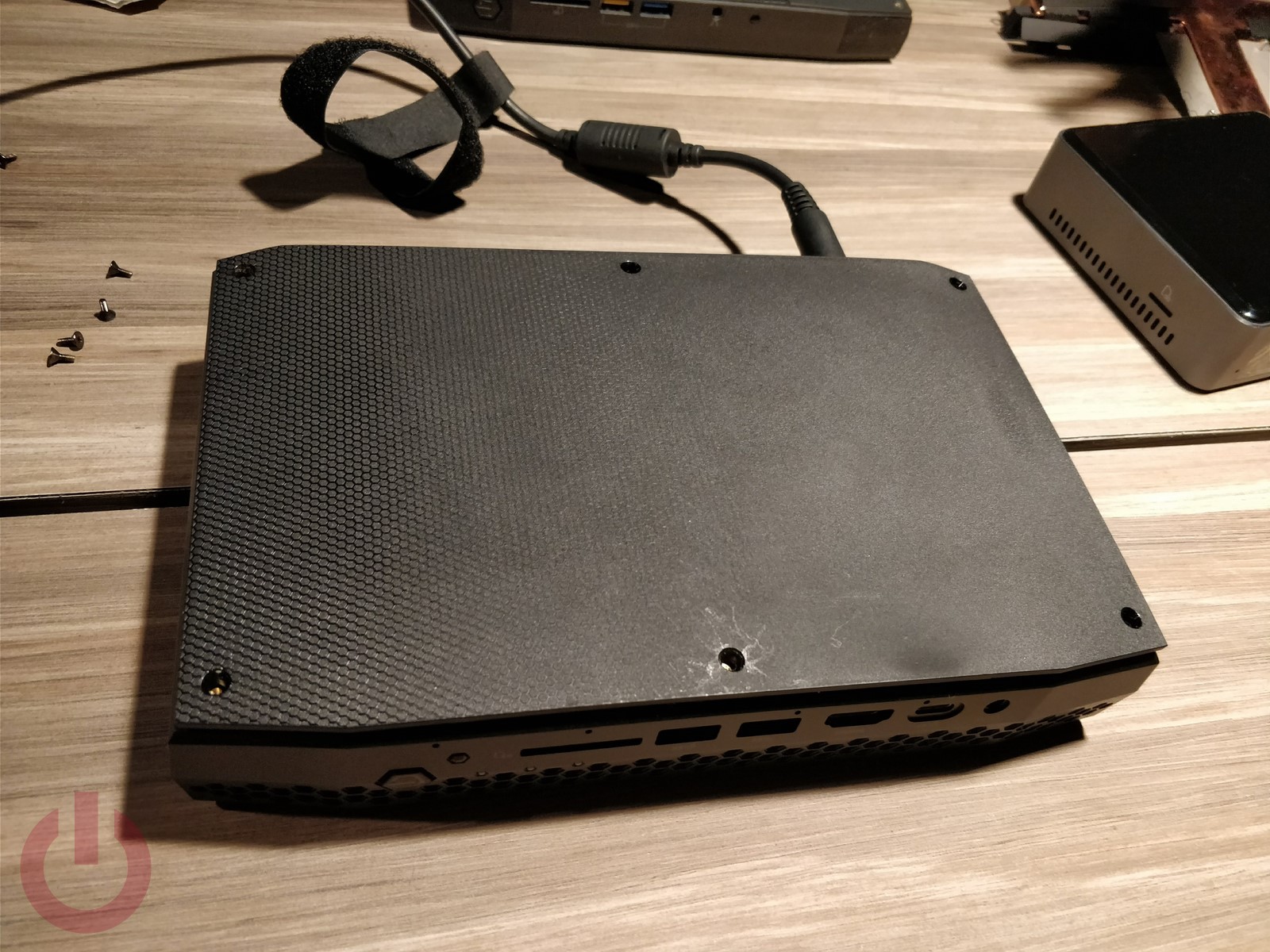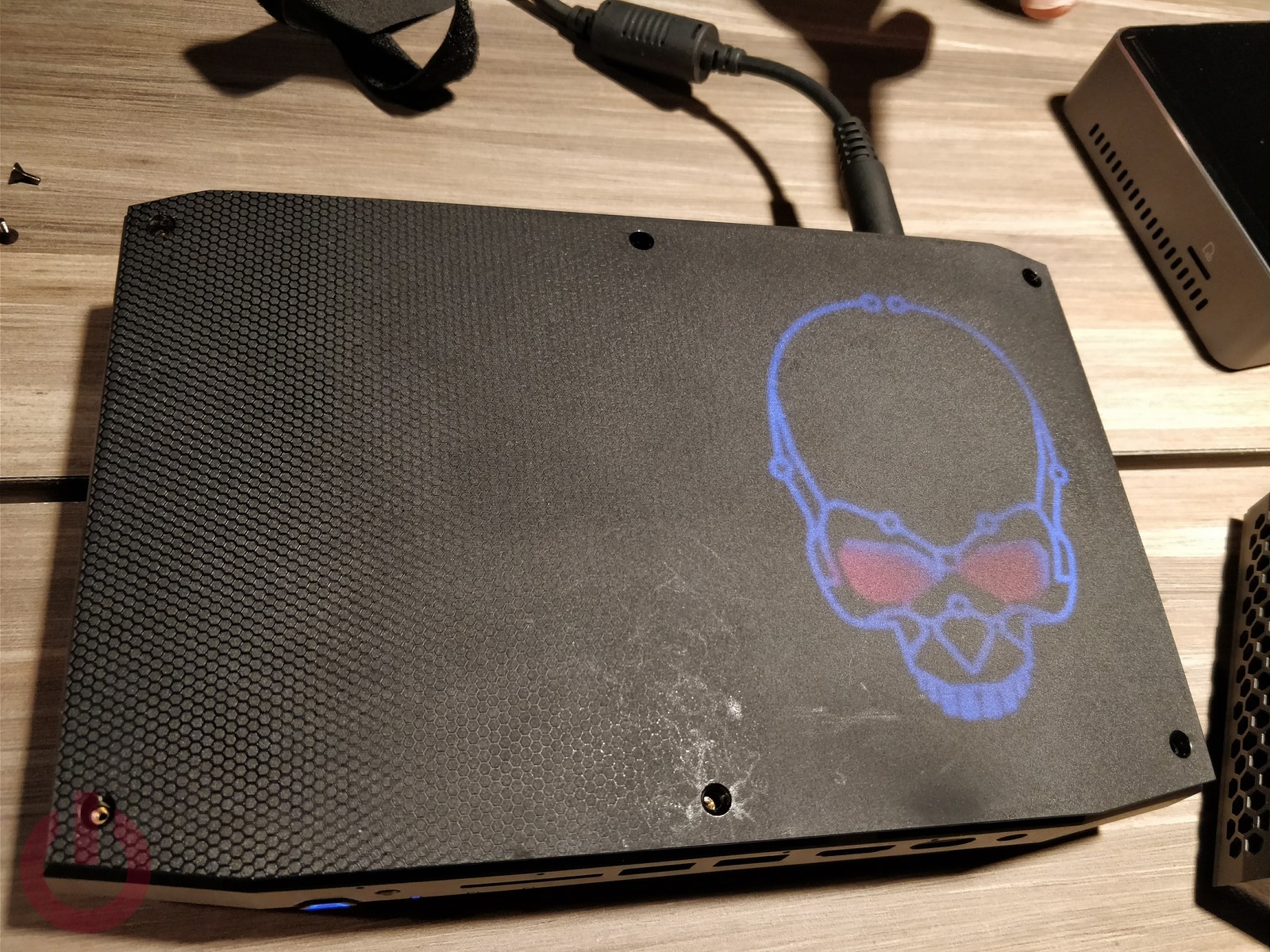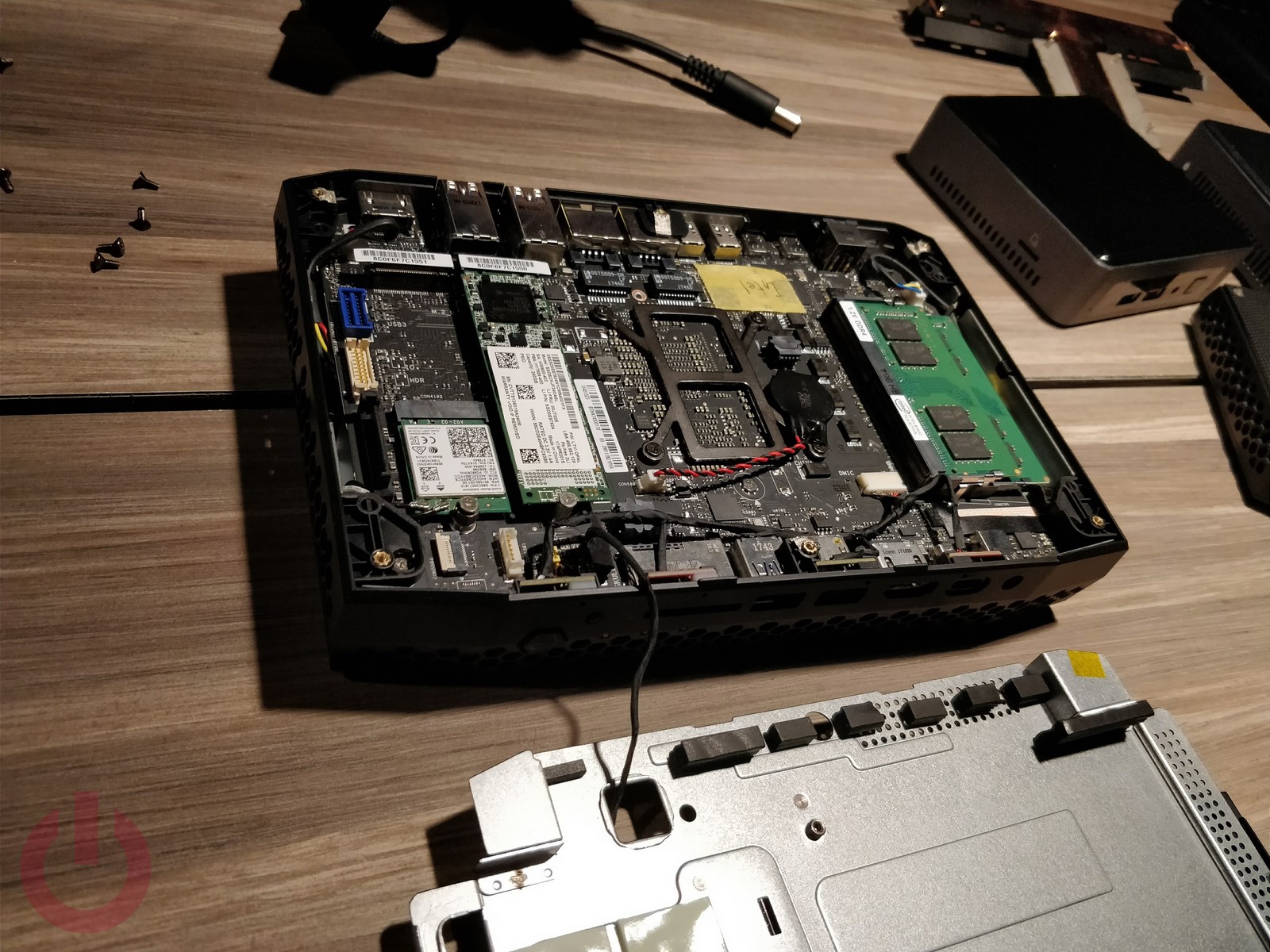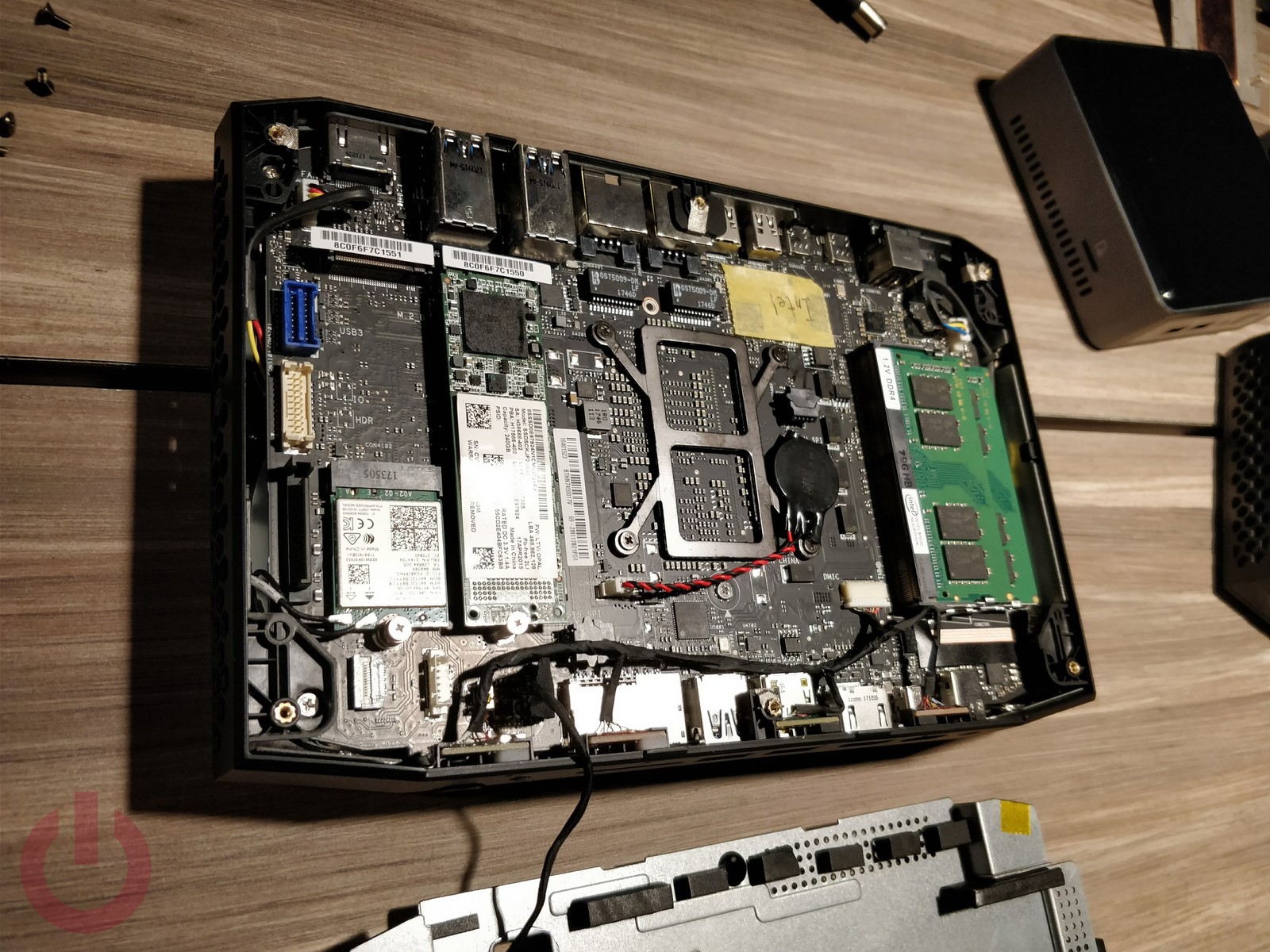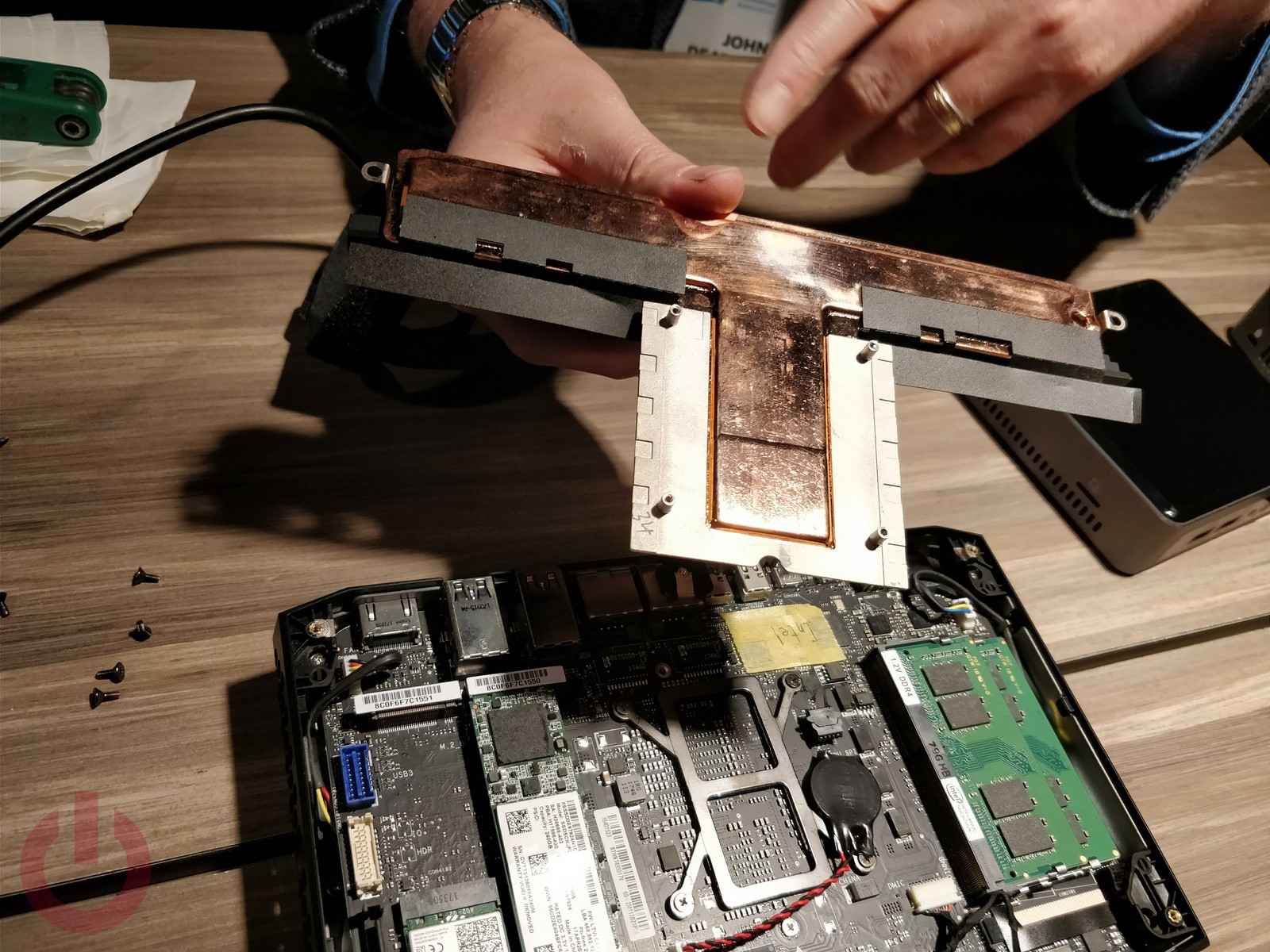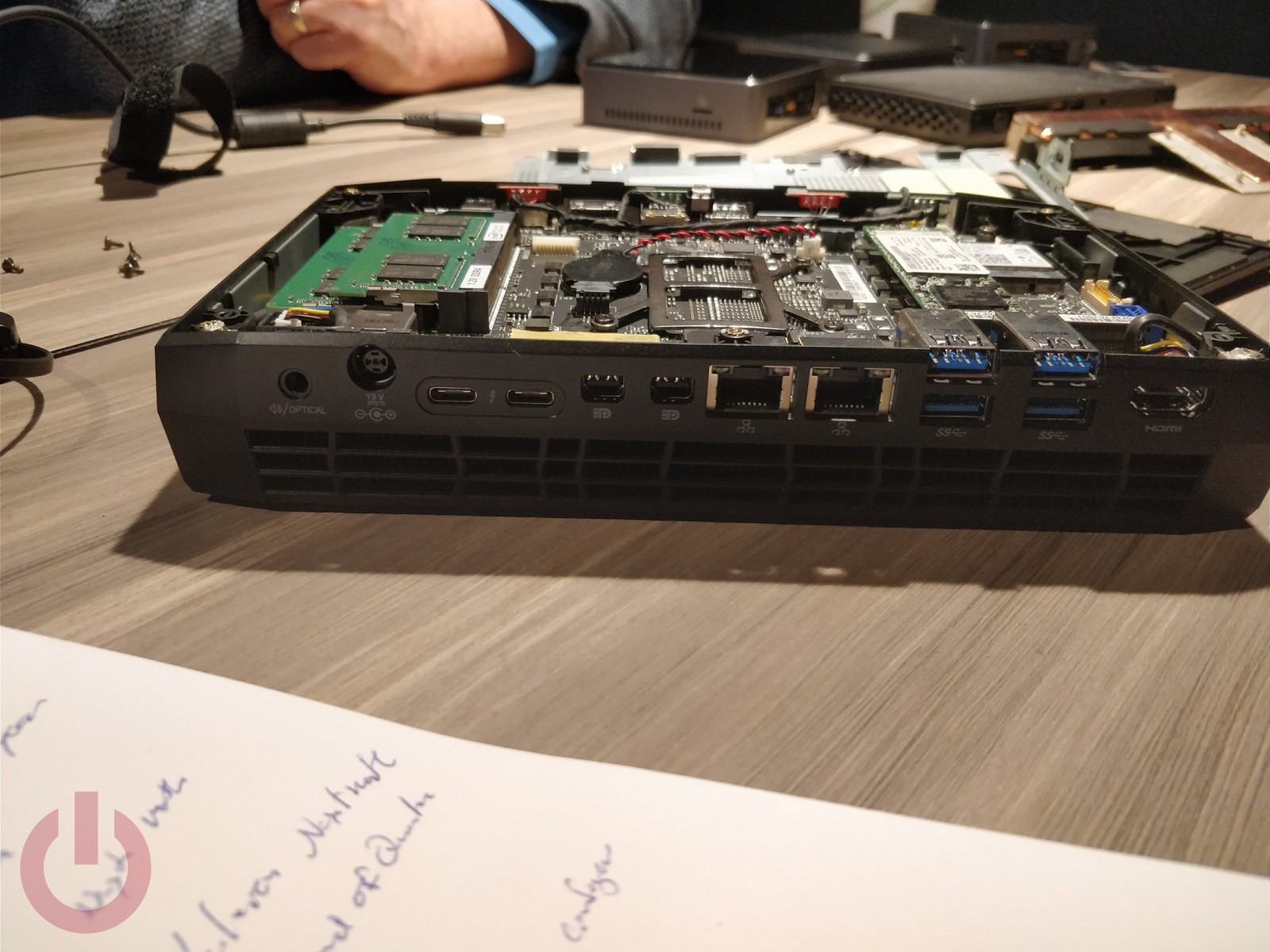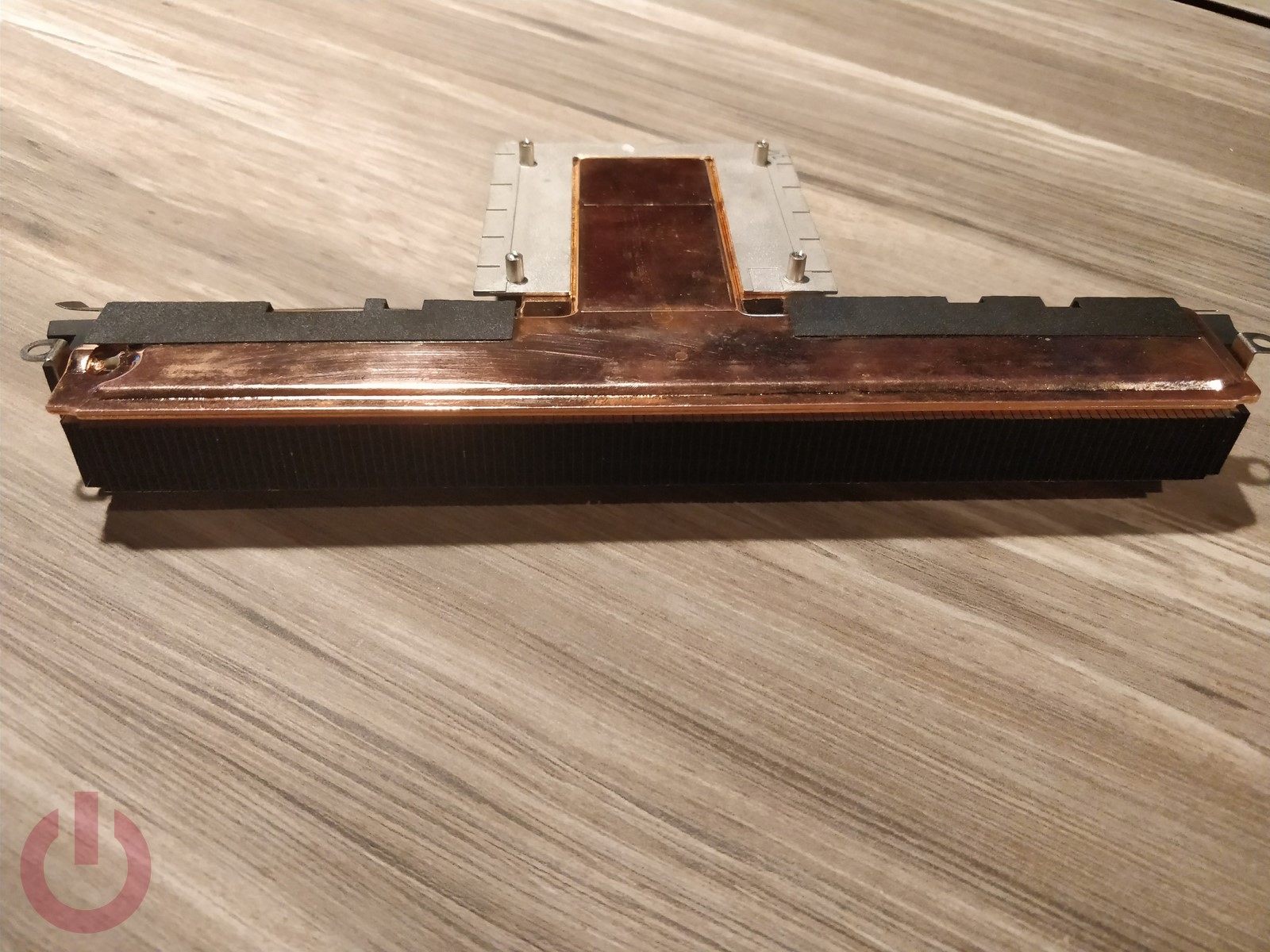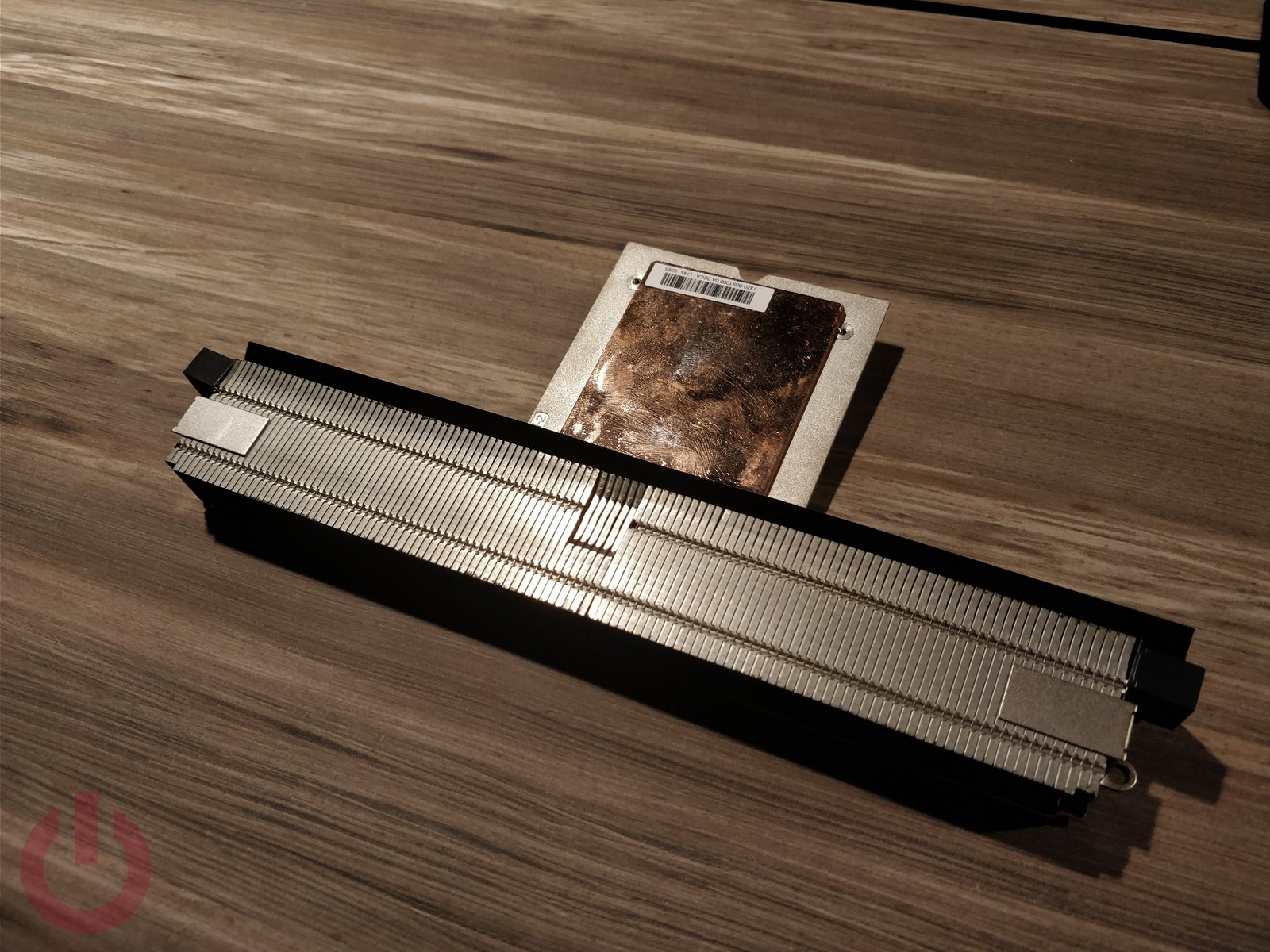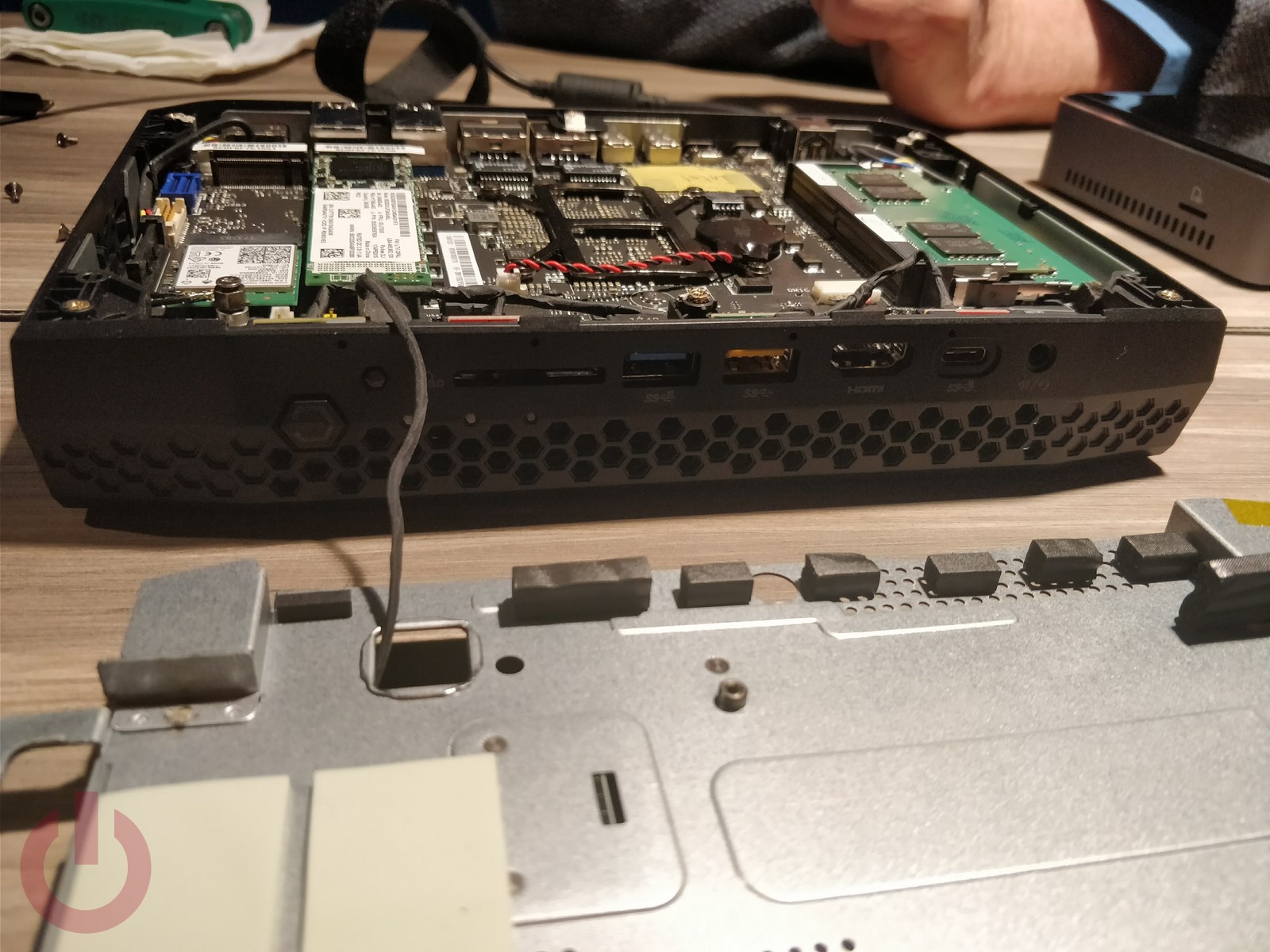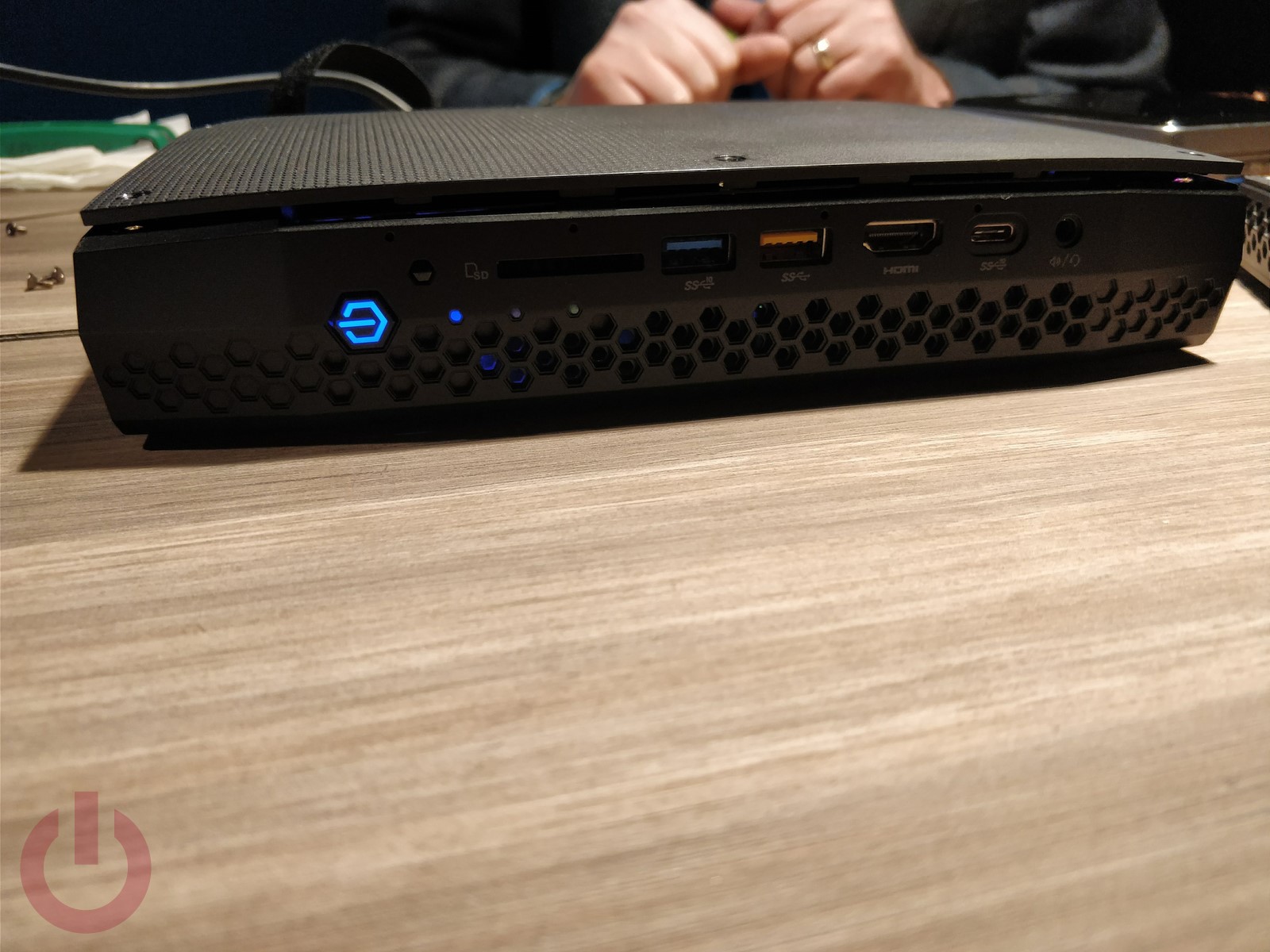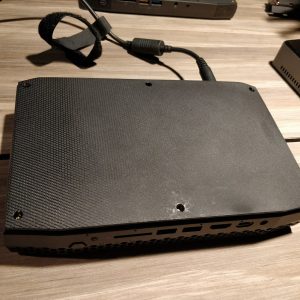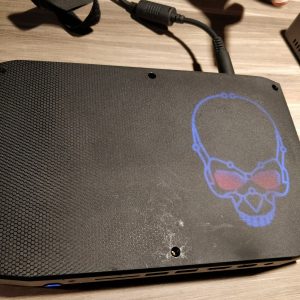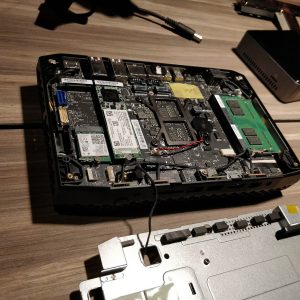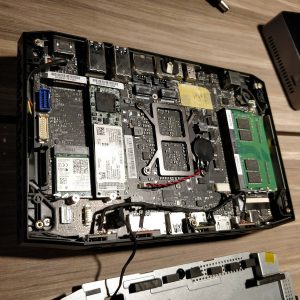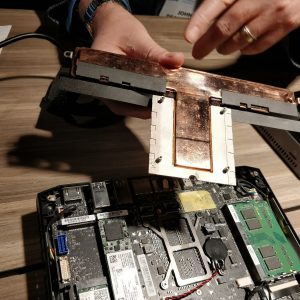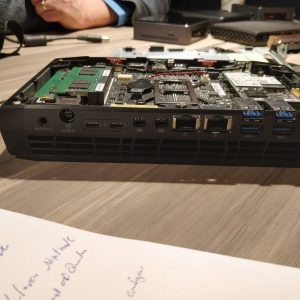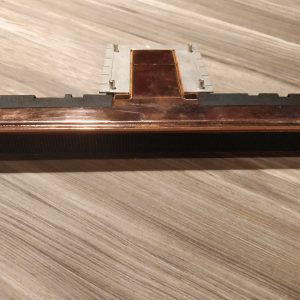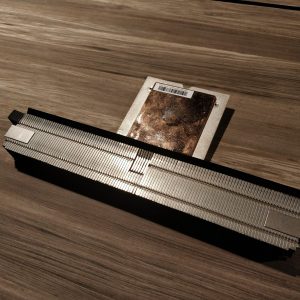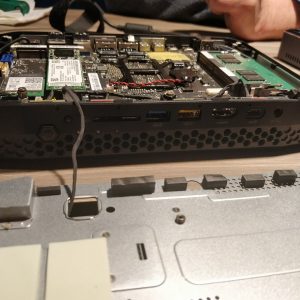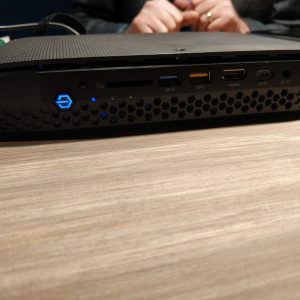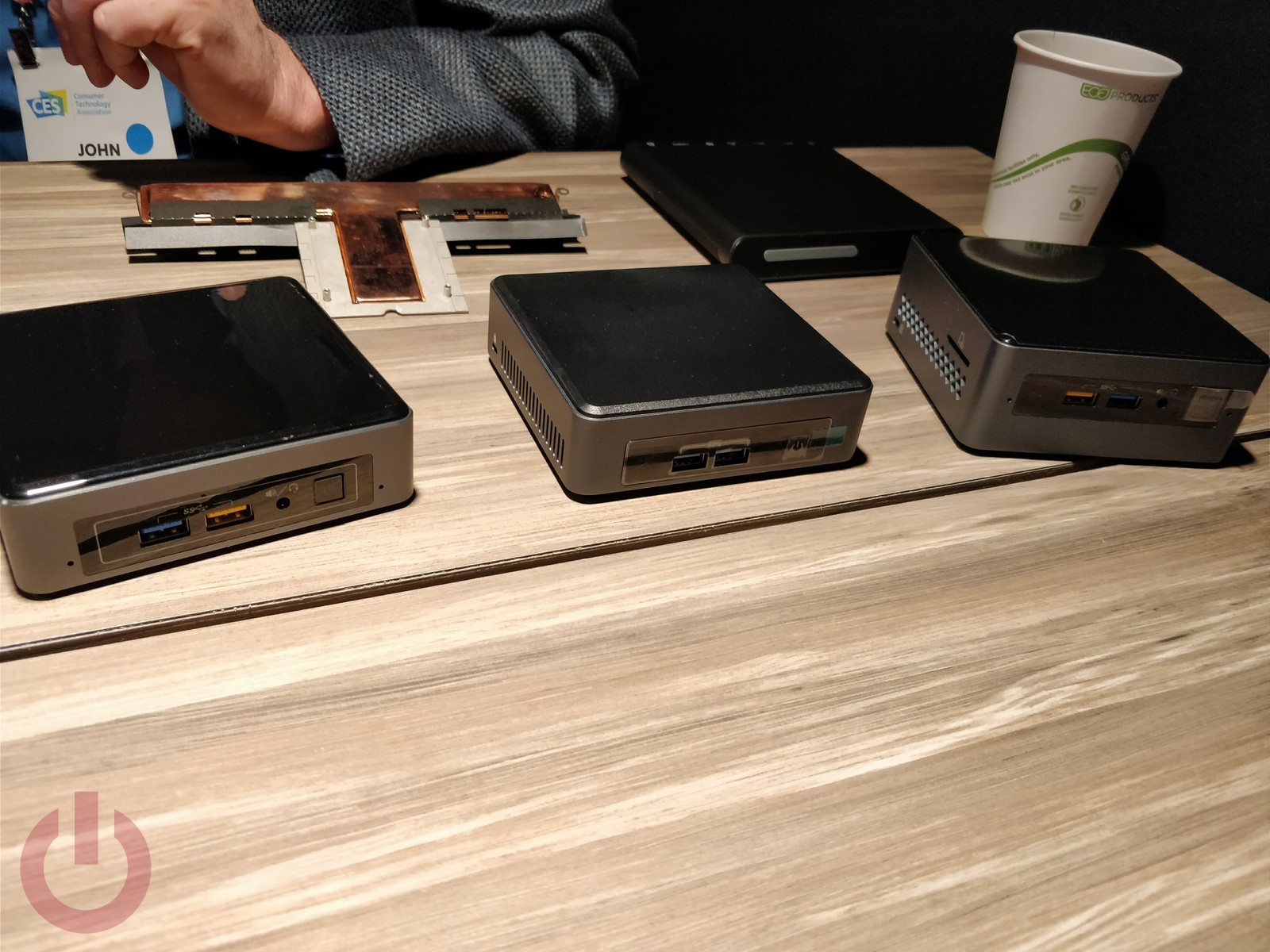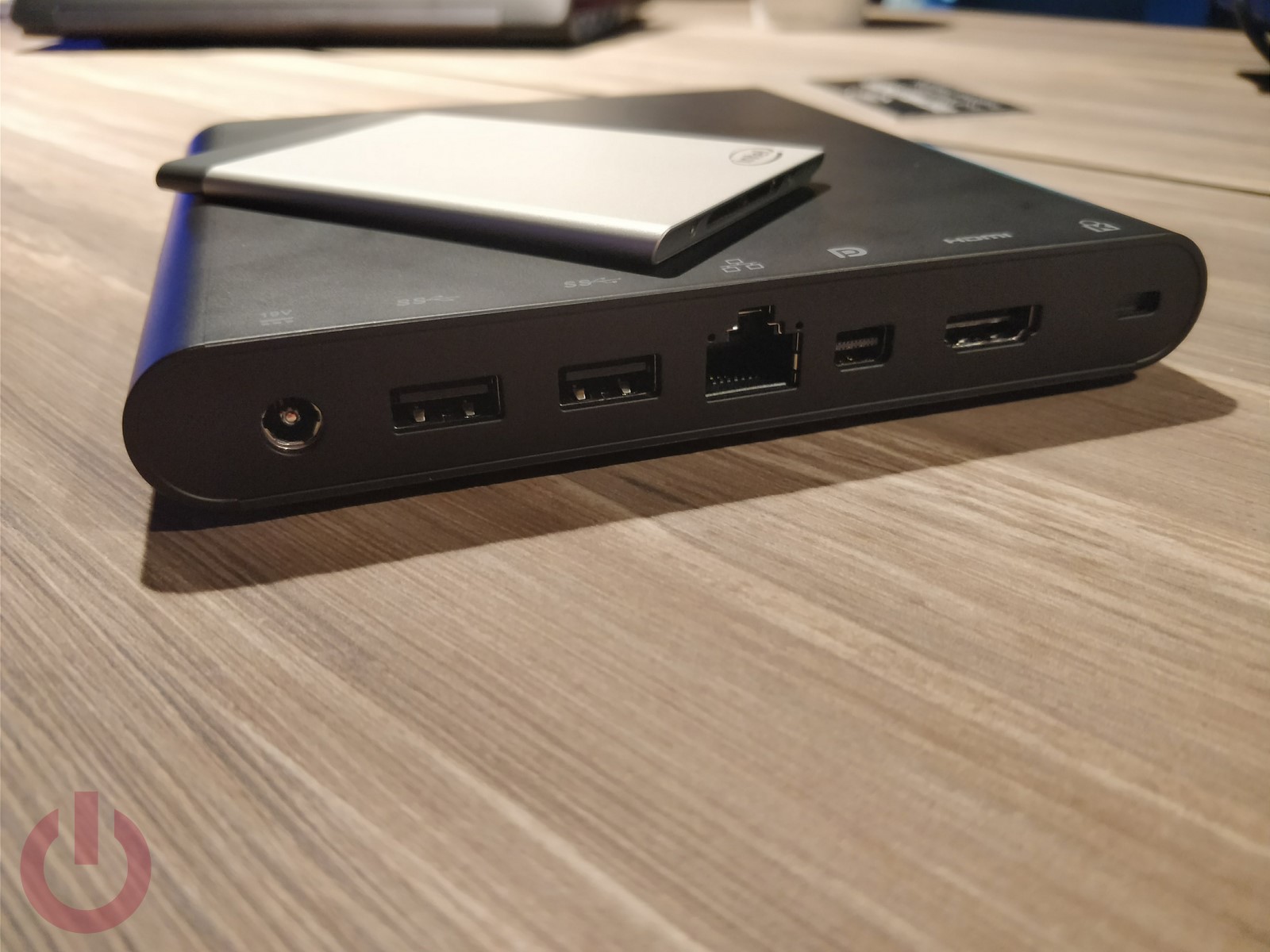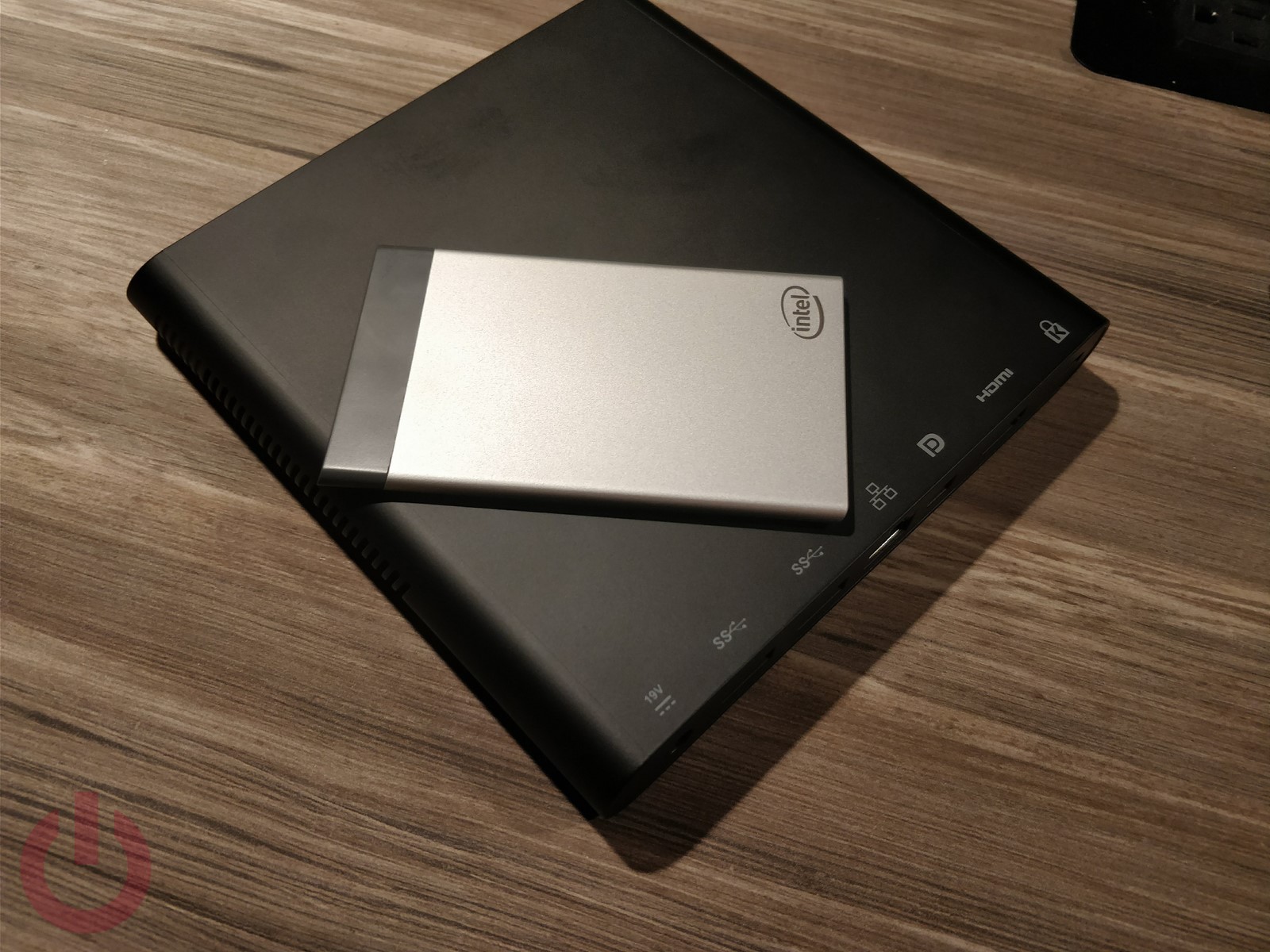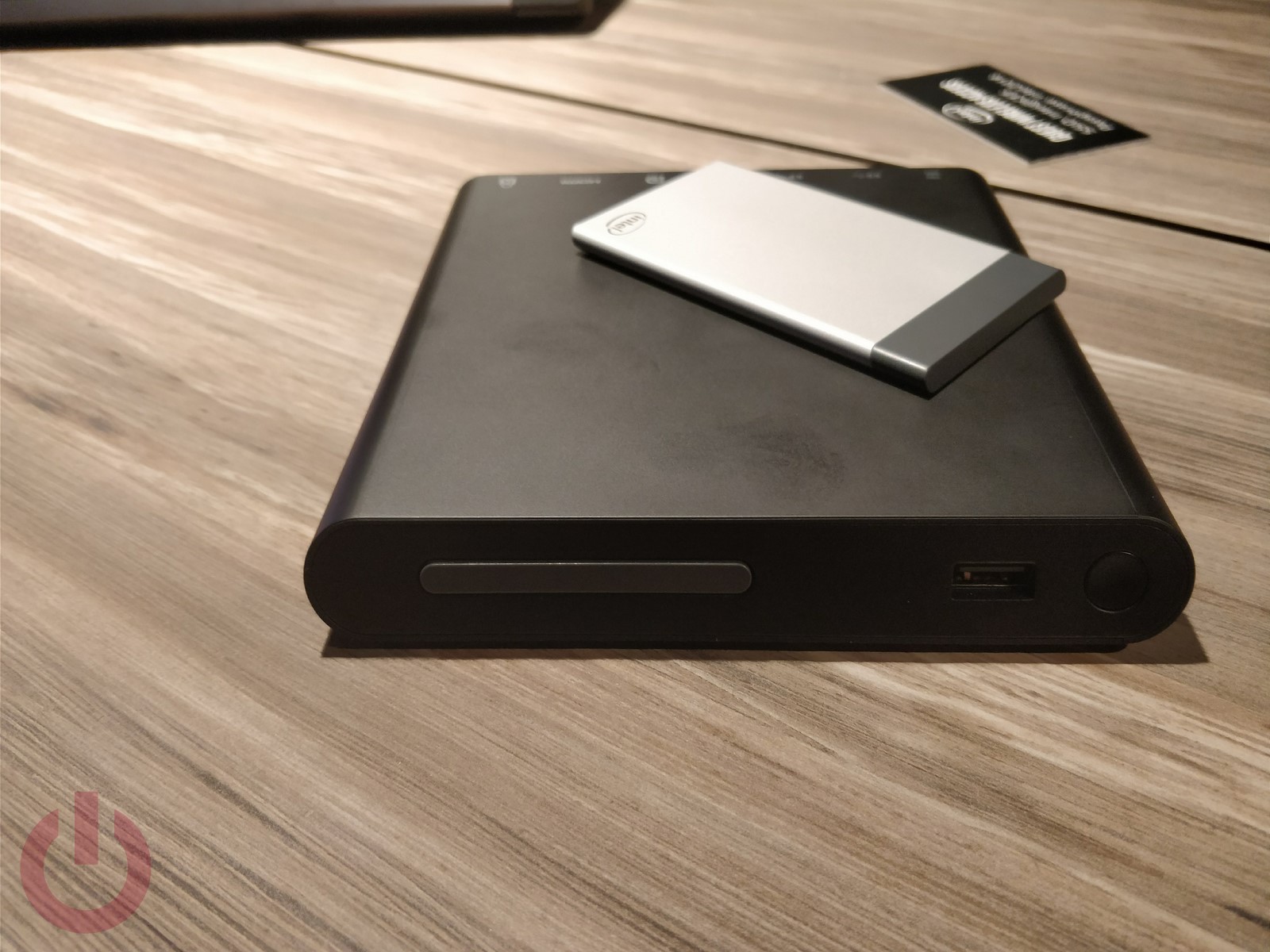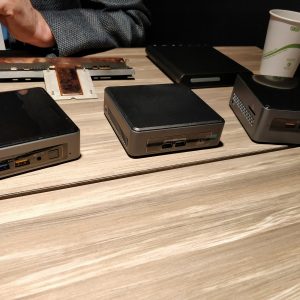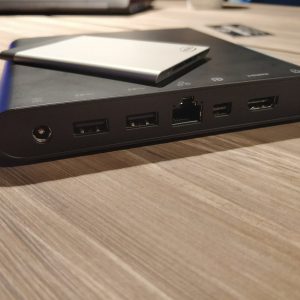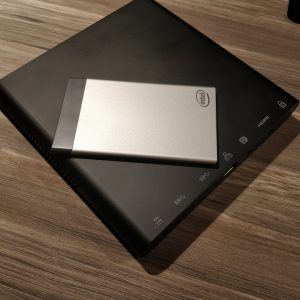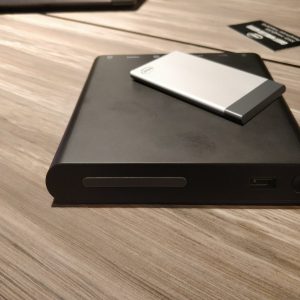CES 2018 – Intel Hades Canyon, NUC, and Compute Card
Our coverage of Intel from CES 2018 has been delayed because I was trying to run down an important question for the home theater PC (HTPC) use case of their new Hades Canyon NUC. In a departure from the previous generation Skull Canyon, high-end NUC, there will be two SKUs of Hades Canyon: NUC8i7HVK ($999) & NUC8i7HNK ($799). The only real difference between the two is the “CPU”.
One has the 100W TDP Intel Core i7-8809G, the other a 65W Intel Core i7-8705G. At the CPU level, these processors are very similar – only varying in maximum turbo frequency. So the big difference in capability and TDP comes from the integrated Radeon RX Vega GPUs. $200 and 35W is the difference between VR (24CU) and no VR (20CU), which should also translate into more capability for madVR. The shared hardware spec is very substantial. Including 2x Intel NICs, 2x M.2 22×42/80, 2x Thunderbolt, and 2×2 802.11AC support. Specific to HTPC use, Hades Canyon will support HDMI-CEC and CIR. But, it’s likely (and this is what I was trying to run down) that the CIR solution does not support discrete power commands, which is unfortunate for anyone with a macro driven universal remote. The vapor chamber cooling solution should be quite effective, and the maximum noise level is rated at 45dB (4.5Bel) at 2200RPM. Oh, and don’t worry about the skull – it’s a user configurable LED array with an app to configure what shows up.
If your NUC preference runs a bit lower-spec, there will also be Coffee Lake SKUs near the middle of the year. As well as Gemini Lake, Atom based, “value” NUCs in the next couple months.
We also had a chance to look at the 6W Intel Compute Card, which is essentially a PC built in to something 3-4 credit cards in size. The idea is that this card goes with you where ever you go – office, home, car, etc. – and you plug it into a dock in each location to make it useful. Currently there the consumer story isn’t that compelling, but once the docks become more available, built into more components (TVs, cars, monitors, etc.) I could see this being very useful.

